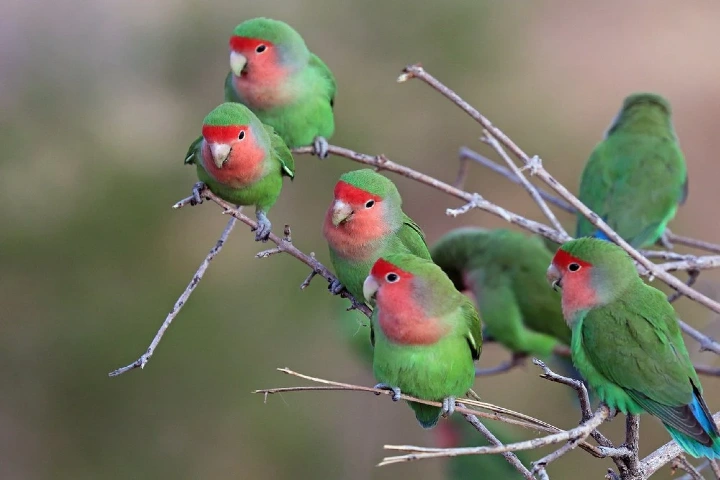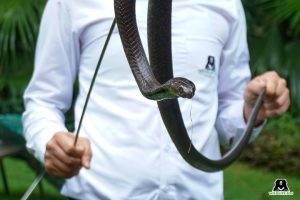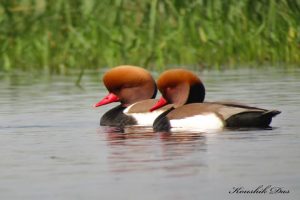Usually limbs – arms and legs – numbering two are used by creatures to move around in their habitat. Yet there are exceptions to this like kangaroos who have a fifth limb, their tail, which enables them to move forward.
A smithsonianmag.com report throws light on researchers having found another creature which is an exception to the rule of using two limbs. These are lovebirds – parrots who are small and whose colours are bright – who use as third limb their beaks for tree climbing.
This research was published in the journal Proceedings of the Royal Society B.
In the past too, scientists had observed these parrots using their beaks to climb but they were not sure if it helped them to move forward or it provided a stabilising hook to keep their balance.
Intrigued by this rather novel style of climbing, scientists got six of these rosy-faced birds into their laboratory. Using cameras with high speed and sensors that could track their movements at different incline angles, they carefully studied them. Gathering the data from the cameras and sensors, they observed that lovebirds periodically used their beaks as a third limb when the pitch grew steeper than 45 degrees. When it came to surfaces that were vertical – 90 degrees angle – these birds used the beaks in this style always while climbing.
The power that was generated by the beaks of these birds as much as their legs in their cyclical tripedal gait. The power of the beak adjusted for weight was more than or equal to the power of the rock climber’s arms or that of forelimbs of other climbing primates.
Using their beaks as propulsive limbs, these cute parrots are more like kangaroos and spider monkeys that use their tails to move forward. In that sense they are less like the giant anteaters and crocodiles that drag their long tails even they are walking, pointed out the scientists.
The study’s co-author, Melody Young told New York Times: “For them to take their faces and integrate it into their stride cycle is pretty incredible.” Young is an anatomist at the New York Institute of Technology.
As to how the use of the beak for climbing evolved, scientists are not sure but they think that since lovebirds alternate their legs when they walk, they therefore, can’t hop up and down tree trunks. Both the nervous systems as well as the neck muscles of the birds had to adapt to this rather different and distinct climbing style.
In their paper the scientists wrote: “Parrots rarely hop and appear to have lost this ability somewhere in their evolutionary history. The use of the beak as a propulsive third limb may be either a consequence of, or the causal factor driving, the loss of this ability.”
Lovebirds thus can count themselves among those rare exceptions like kangaroos and a few other animals who circumvented nature’s inclination for symmetry making these lovable birds a scientific anomaly.
Also read: Clever parrots use golfing skills to get a treat!




















